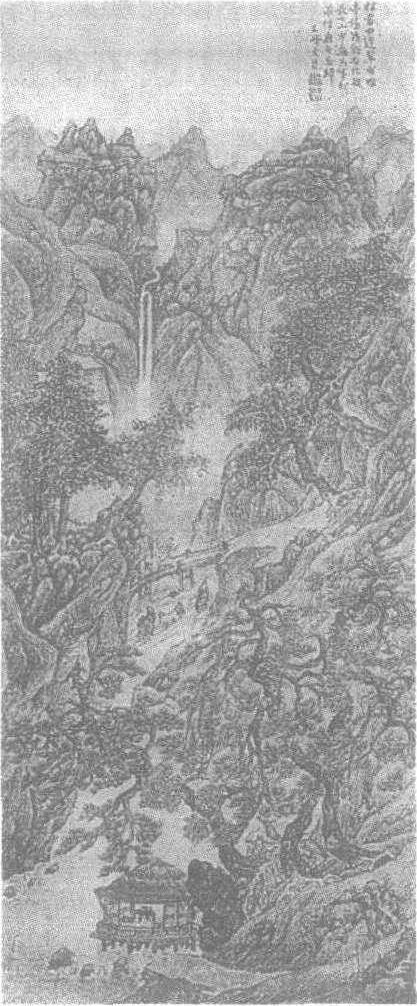沈周《庐山高图》
立轴,纸本,淡设色。此图是作者为祝贺老师陈宽七十寿辰所作。因陈宽祖籍江西,故作“庐山高”,满含了对师长的崇敬之情。图中画庐山高大秀丽,画面右下角一巨岩上,几棵古松虬劲盘错,一人立于岩上仰头观望,对比之下,更觉山的高大深幽。山势从右下向左上逶迤而上,一挂瀑布高悬崖间,一条索桥横贯其上,险峻中又多了几分奇趣。主峰又向画面右侧扭转,其侧巨石林立,云雾缭绕。纵观画面,S形的山势显得巍峨壮观,古树飞瀑显得大气磅礴。而作者笔墨精到,一丝不苟。于紧密处见出点点空隙;于疏朗处又加些淡墨的皴擦,或干脆用重墨点上几点。全图气脉贯通,细润华滋。是作者中年时期巨幅山水中的代表作。

沈周 《庐山高图》
沈周(1427~1509),字君南,号石田,长洲相城(今江苏吴县)人。出身书画世家,一生读书不仕,擅长书画,山水、花卉、人物无一不专。作者早年力学北宋董、巨、李、范诸家,尤其得董巨秀润之气,对元四家也追求摹拟,又能融汇贯通,自成一体。中年时便享有盛名,成为吴门画派领袖。